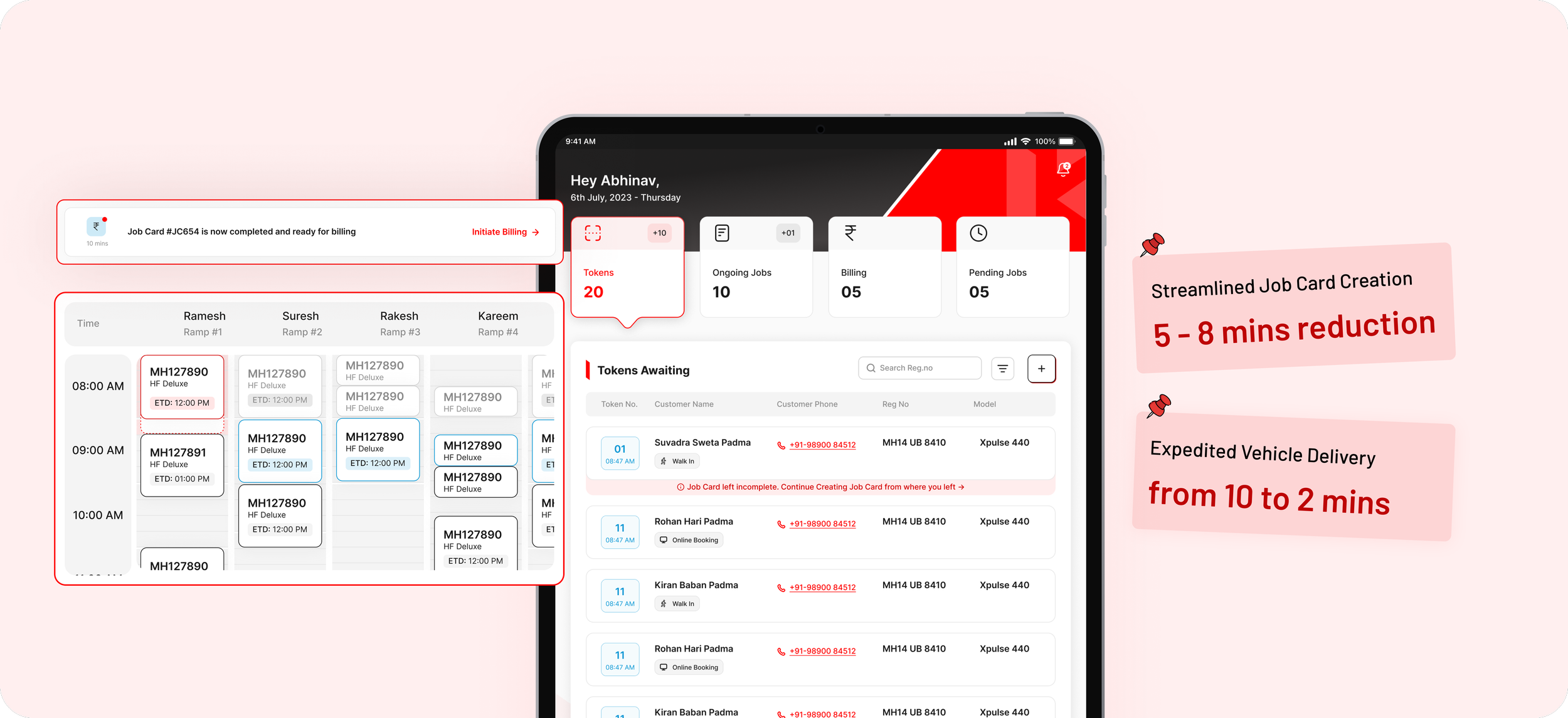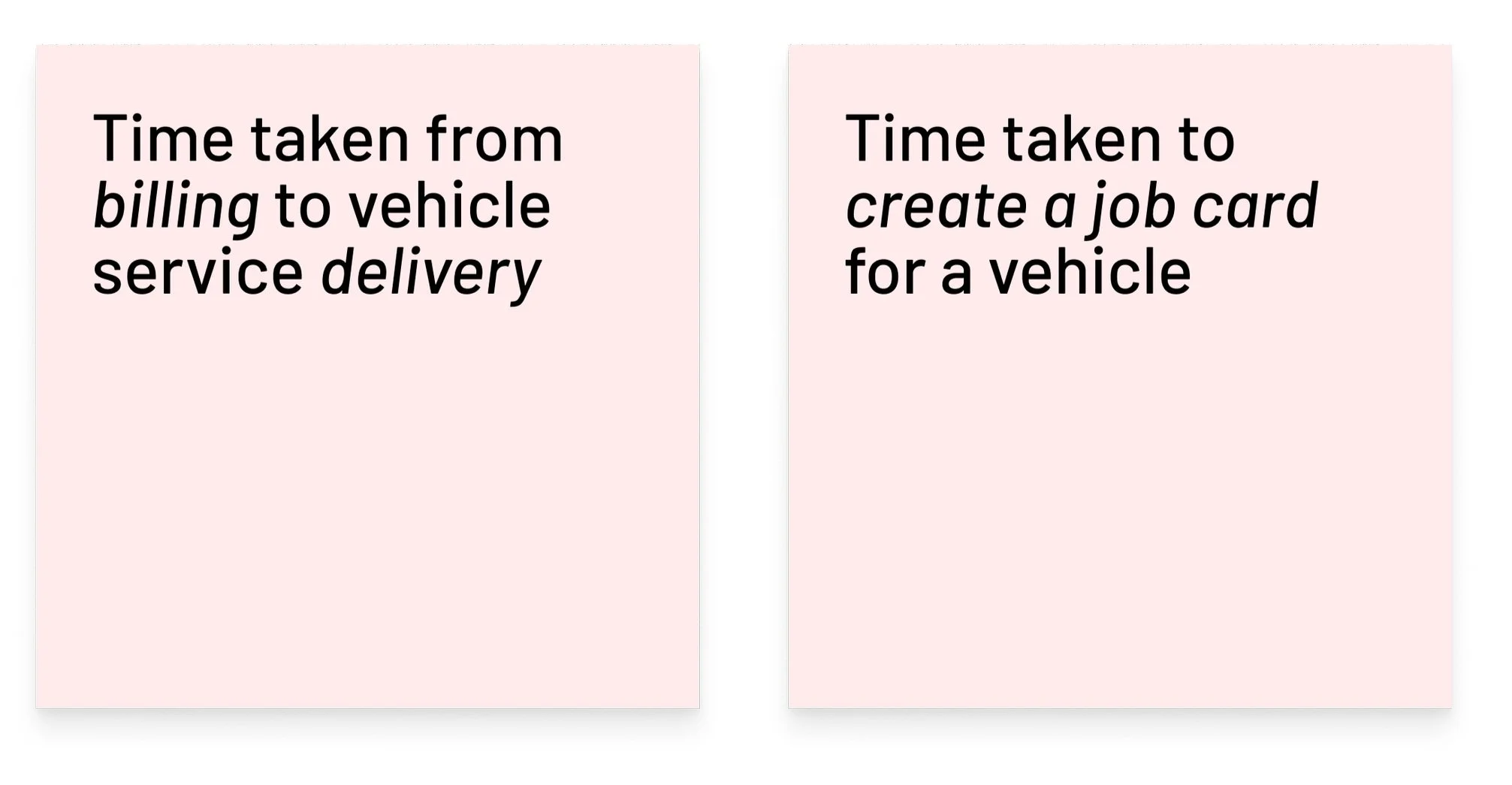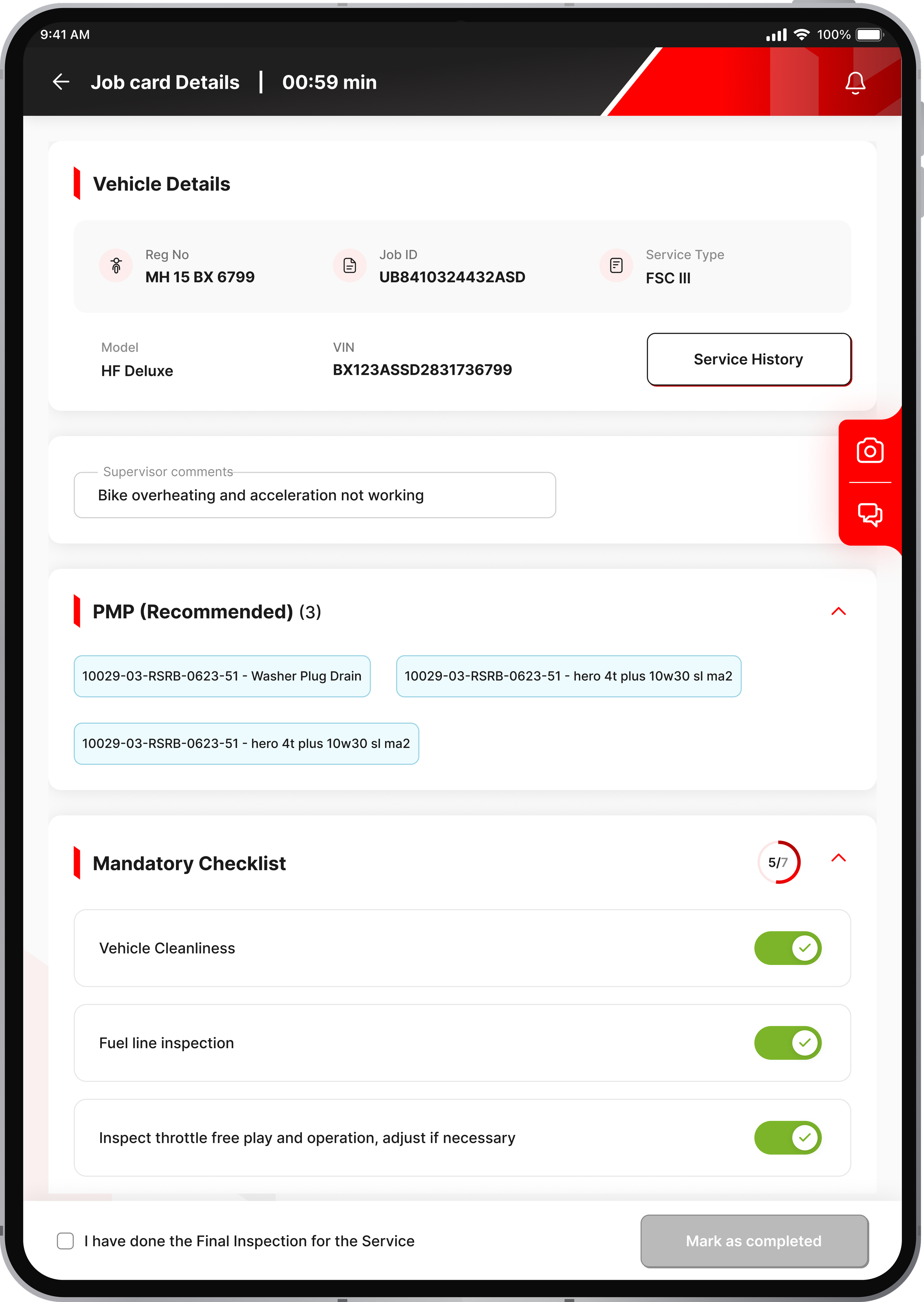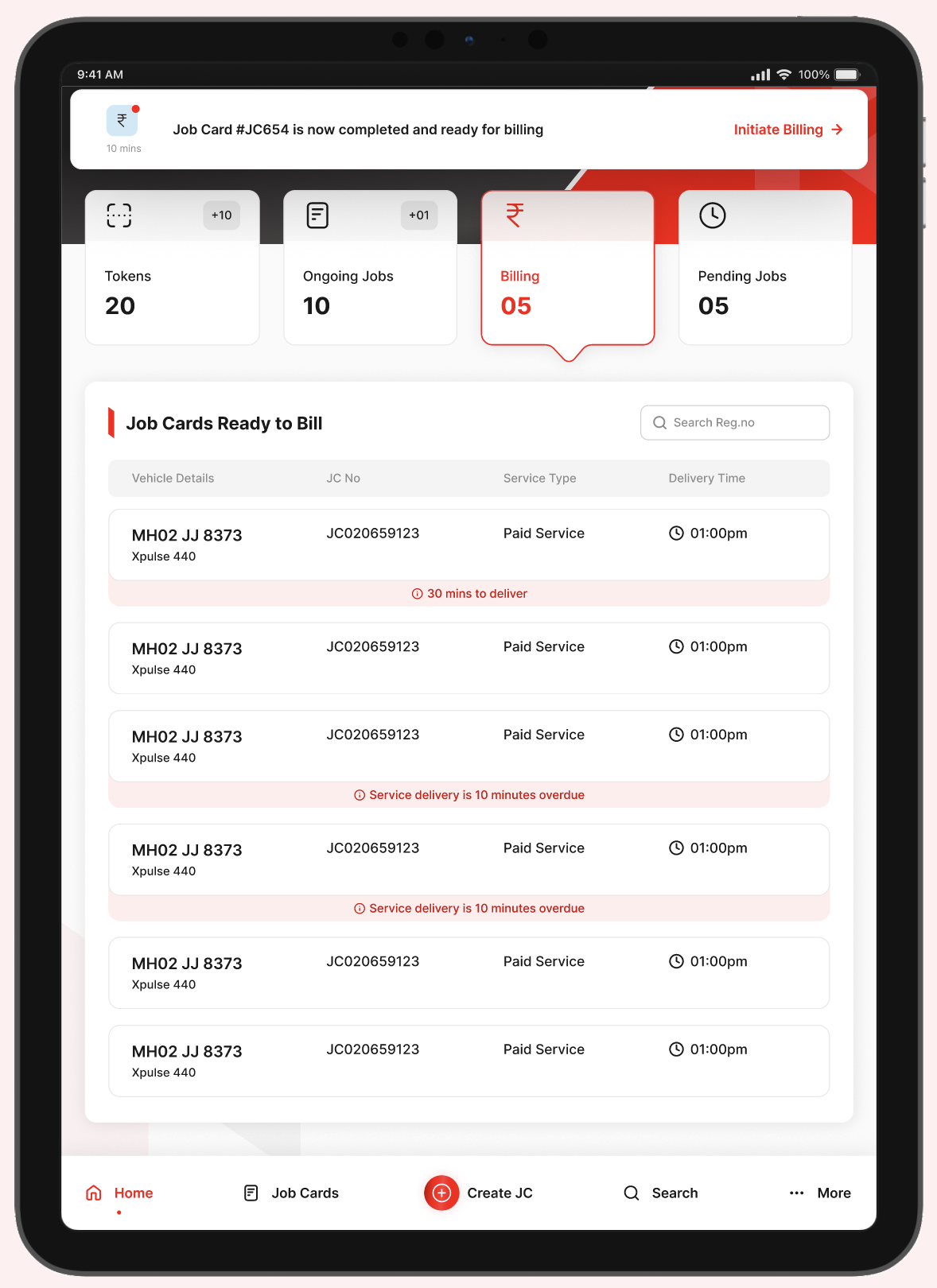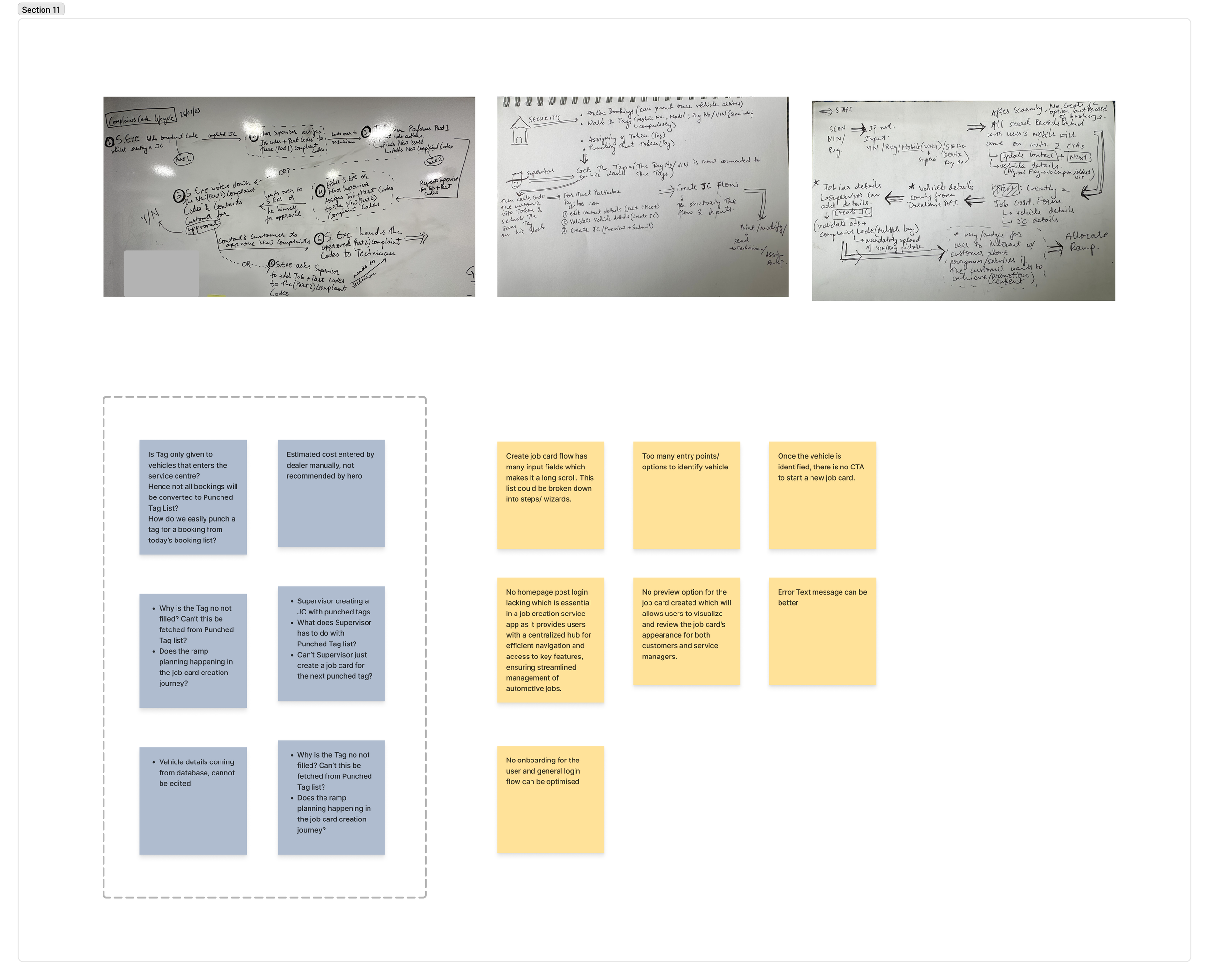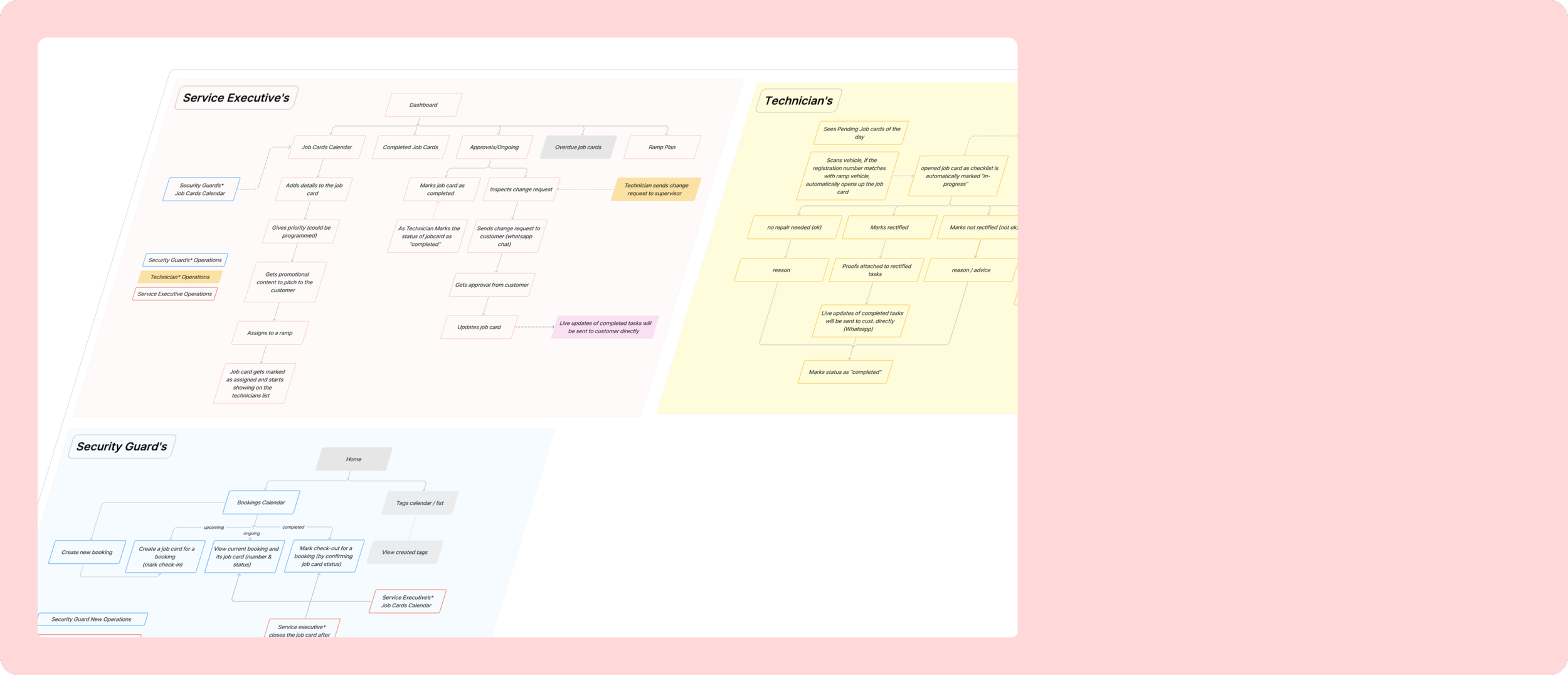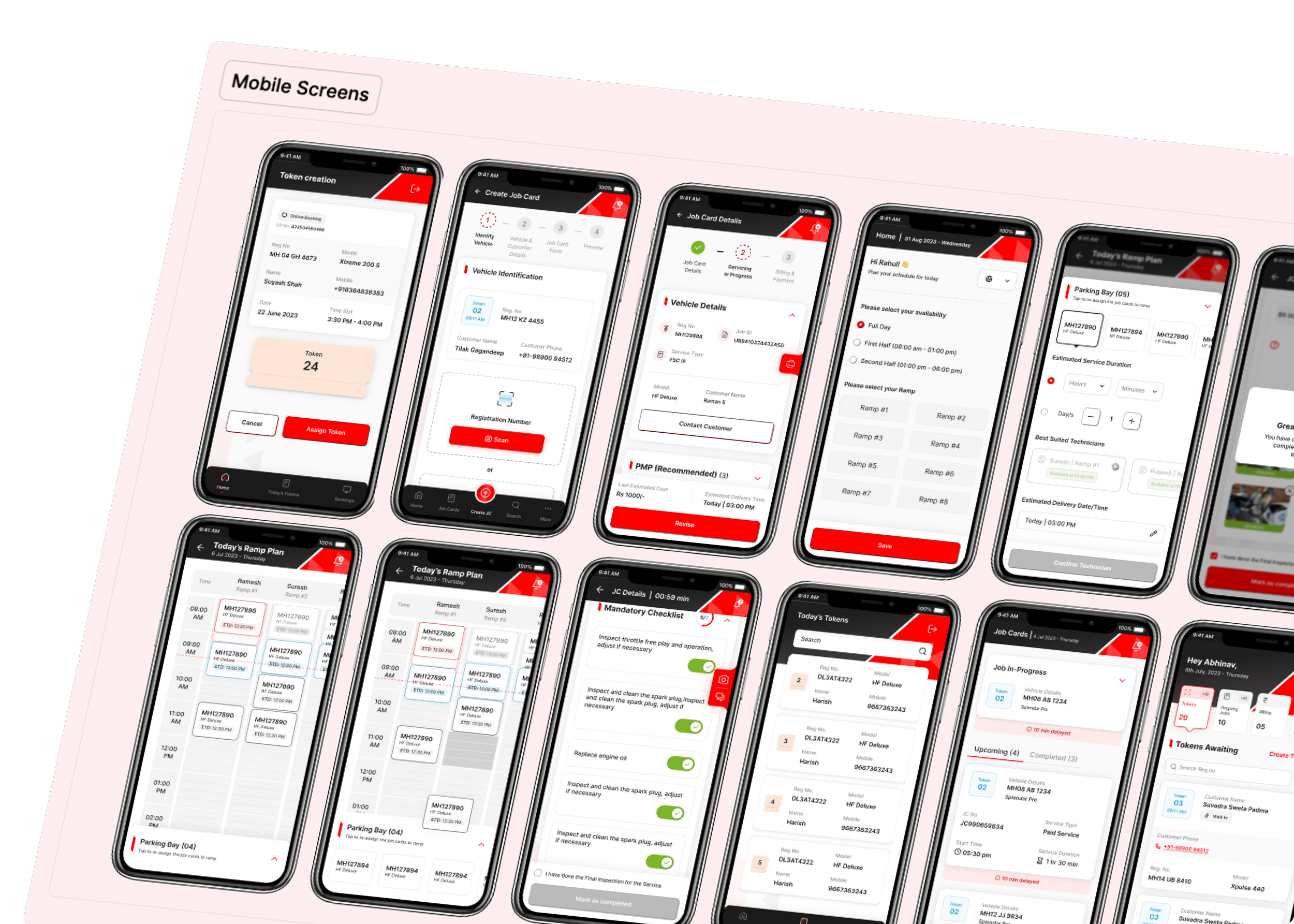Integrating Two-Wheeler Vehicle Service Workflows for Optimal Operations and Faster Delivery
SERVICE DESIGN
ENTERPRISE
MY ROLE
IMMEDIATE TEAM
UX Designer & Team Lead
2 UX Designers, 1 Visual Designer
Hero Motor Corporation, India (client) with Yuj Designs
PROJECT DURATION (YEAR)
4 months (2024)
DESIGNED FOR
BACKGROUND
Before this project, operations at two-wheeler service centers were severely fragmented because the existing app didn’t support the inherent interconnectedness of workflows and critical dependencies among the key stakeholders — Service Executives, Technicians, and Security Guards.
This reliance on manual handoffs and disparate applications by these key stakeholders directly compromised customer waiting times, service accuracy, and overall customer satisfaction.
An image depicting the interconnected tasks of Service Executive, Technician, Security Guard, and Customer
IDENTIFIED PROBLEM
Through our research, we found that existing app fundamentally failed to accommodate the dynamic workflows and collaboration essential for service center operations.
Through a combination of primary & secondary research methods, we identified three critical challenges affecting efficient service delivery:
01
Lack of interconnected
workflows caused operational delays.
Limited visibility to operations led
to inefficient back-and-forth communication for all stakeholders.
02
Service Executive's limited awareness on vehicle
status affected prompt decision-making.
Service Executives lacked a real-time overview of vehicle statuses (such as ready for billing, in service etc) which hindered proactive management.
03
Unnecessarily Long Job Card Creation Led to Excessive Waiting Time & Customer Frustration.
Overly long forms and lack of intuitive navigation represented a major time consumed in service operations and delays.
Research Methods:
Heuristic Analysis
Competitor Research
Stakeholder Interviews
GOAL SETTING
We set a clear project goal to improve customer experience and enhance service efficiency.
As designers, we focused on primary metrics that directly influenced these areas. We prioritized:
Hence our challenge was,
How might we integrate and streamline interdependent operations to enhance service efficiency and customer satisfaction, leading to faster vehicle service
in two-wheeler vehicle service center?
SOLUTION OVERVIEW
By leveraging the interconnectedness of workflows and simplifying service management, we redesigned the digital platform to enable faster task execution and more informed decision-making.
SOLUTION 1/3
Before
Overly complex job card form
Lacked clear information architecture, forcing service executives to scroll endlessly through a long list of fields, especially when dynamic fields like supervisor selection changed frequently.
After
Intuitive job card simplifying data entry through progressive disclosure
Implementing a sidebar navigation with progress indicators, logically grouping information, and a clear hierarchy. For example — dynamic fields like “Critical Job card” and “supervisor” were made sticky at the top for constant accessibility.
SOLUTION 2/3
Before
Manual Technician workflow
Technicians lacked a dedicated job card view, relying on printouts and mental checklists. They manually performed tasks and informed service executives upon completion.
After
Integrating digital job cards to empower Technicians by reducing workflow dependencies
Introducing an integrated in-app job card view for technicians, featuring a digital checklist, service history access, photo documentation, and an in-app chat for support.
SOLUTION 3/3
Before
No overview of vehicle service statuses
Service Executives lacked an overall view of the service center's status and real-time vehicle updates.
After
Real-time dashboard to improve proactive vehicle service management
Introducing a dashboard with real-time communication, push notifications, and highlighting overdue or pending vehicle delivery times creates urgency and priority in management.
Let’s understand how we arrived at the solution:
01 UNDERSTANDING AND EVALUATING THE CURRENT STATE
To effectively frame our design hypotheses, our initial step was to thoroughly understand the fragmented service flows in this domain
We employed various methods of secondary research:
02 UNDERSTANDING HOW KEY STAKEHOLDERS PERCEIVED THE APP
We interviewed SMEs (Subject Matter Experts) at Hero Motor Corporation
We conducted 5 SME interviews, this allowed us to gain a deep understanding of the service ecosystem and identify critical pain points from the perspective of experienced Hero MotorCorp service professionals.
This helped us gain valuable insights that set out design directions,
Inaccurate documentation of complaints on job cards led to customer dissatisfactions.
This stemmed from initial inaccurate diagnoses and a lack of review with customers, as technicians often identified more precise issues during service.
INSIGHT 01
Manual monitoring of vehicle status led to delayed customer attention and frustration.
Manual tracking of vehicle status by Service Executives (whether in the lobby or on the service ramp) resulted in delayed customer attention and increased frustration due to prolonged waiting times or issues during billing.
INSIGHT 02
Technicians preferred printed job cards for mobility and manual task management.
Being on the move, technicians found printed job cards more accessible for checking tasks, creating mental checklists, and tracking progress compared to a digital documentation format.
INSIGHT 03
03 SETTING DESIGN DIRECTIONS
Based on the insights, we defined the key users needs to achieve faster vehicle service and improved customer satisfaction.
To align stakeholders before wireframing, we first redesigned the service task flows.
04 FINAL SOLUTION
Showcasing Key Features of
Re-designed Service App
These videos highlight the core features of the redesigned platform, demonstrating how our solutions directly address the key user needs and improve overall service efficiency and customer experience.
Empowering Service Executives with a Real-Time Dashboard
A central dashboard, providing real-time visibility into vehicle progress and customer flow. It ensures no customer or vehicle is overlooked, driving proactive management and reducing wait times.
2. Streamlining Workflows in Technician’s Job Cards
By providing technicians with an interactive digital job card featuring a checklist and integrated timer, we streamlined task management and enabled direct in-app communication, leading to real-time updates and accurate documentation of service changes.
3. Optimizing Technician Allocation for Efficient Timely Delivery
This Ramp Plan enables Service Executives to flexibly allocate and strategically manage vehicles on service ramps based on real-time availability and expertise of technicians, thereby optimizing resource utilization, minimizing idle time, and ensuring efficient, timely delivery.
4. Ensuring Transparency & Accuracy through Voice-Recorded Complaints
We designed a consent-based voice recording feature to accurately capture customer complaints, providing technicians direct access for enhanced diagnosis. This reduces miscommunication, ensures transparent documentation, and ultimately improves service accuracy and customer satisfaction.
Responsive Design for On-the-Go Users
We designed the screens fully responsive, ensuring optimal usability on mobile devices. This was crucial for stakeholders like the Security Guard, who rely on handheld devices for convenience in their daily operations.
05 PROJECTED IMPACT
5-8 mins
Time taken to create a new job card reduced by 5-8 mins.
20%
Enabling voice-recorded complaint documentation resulted to project
reduce in user error rate by 25%
10 to 2 mins
Introducing Technician and Billing
flows projected to reduce the time taken to process service & delivery from
10 mins to 2 mins
06 REFLECTION
My very first deep dive into service design. I felt quite accomplished.
Leading this project taught me invaluable lessons in navigating complex service ecosystems, particularly in managing diverse stakeholder requirements and fostering alignment across teams.
Always Finding the Right Balance Bridging Design & Development
As a design consultant, I've navigated diverse development environments. This taught me a crucial lesson: the necessity of dynamically adapting my collaboration approach to suit each team's unique working style.



